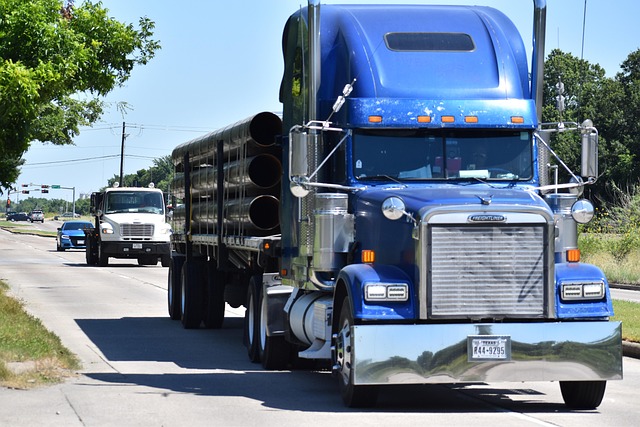Looking to register your car in California? This comprehensive guide walks you through the process, from understanding key requirements to securing your vehicle’s unique VIN verification at the DMV. We’ll break down gathering essential documents, choosing an approved title service (if needed), and paying registration fees. By following these steps, you’ll be cruising in compliance on California’s roads in no time. Don’t miss our detailed instructions for a seamless dmv vin verification experience.
- Understand California Car Registration Requirements
- Gather Necessary Documents for DMV Visit
- Perform VIN Verification at DMV: Step-by-Step Guide
- Choose an Approved Title Service (If Necessary)
- Pay Registration Fees and Receive Your Plate
Understand California Car Registration Requirements

Before registering your car in California, it’s crucial to understand the state’s specific requirements. The California Department of Motor Vehicles (DMV) mandates that all vehicles operated within the state be properly registered and inspected. This process involves a comprehensive DMV VIN verification to ensure the vehicle’s identification number (VIN) is accurate and matches the make, model, and year reported.
Additionally, many residents opt for a mobile vin inspection or vin inspection service for convenience. These services provide on-site vin verification, streamlining the registration process by eliminating the need for an in-person visit to the DMV. Ensure you have all necessary documents, including your vehicle’s title and proof of insurance, to facilitate a smooth registration experience.
Gather Necessary Documents for DMV Visit

Before visiting the DMV to register your car in California, ensure you have all the essential documents ready. This process is crucial for a smooth and efficient registration experience. You’ll need to present proof of ownership, typically a vehicle title or bill of sale, along with valid identification such as a driver’s license or state-issued ID card. Additionally, the DMV will require a current vehicle registration from another state if the car was recently purchased outside California.
For a faster process, consider conducting a DMV VIN verification using a mobile vin verifier or performing a vin inspection before your visit. This step involves checking the Vehicle Identification Number (VIN) to ensure all information matches and is accurate. Having these documents prepared will save you time and potential headaches during the registration procedure.
Perform VIN Verification at DMV: Step-by-Step Guide

Performing a Vehicle Identification Number (VIN) verification at the DMV is a crucial step in the car registration process in California. Here’s a step-by-step guide to help you navigate this process:
1. Gather Required Documents: Before heading to the DMV, ensure you have all essential documents, including your vehicle’s title, proof of insurance, and a valid driver’s license. If you’ve purchased a used car, don’t forget to bring along the previous owner’s signature on the title transfer form.
2. Visit Your Local DMV Office: Choose a convenient time to visit the California DMV. You’ll need to present your documents and undergo a VIN inspection. This process is often faster when done during off-peak hours.
3. Identify Your Vehicle: The DMV representative will ask you to identify your vehicle, confirming its make, model, year, and color. Ensure these details match the information on your registration and title documents.
4. Perform VIN Inspection: This step involves a thorough check of your car’s VIN. You can do this manually by examining the vehicle frame or by using a mobile VIN verification service to quickly cross-reference the number with database records. The DMV staff will verify the VIN’s accuracy, ensuring it matches the information in their system.
5. Complete Registration: Once the VIN is verified, you’ll be able to proceed with the registration process. This includes submitting your forms, paying the required fees, and providing any additional documentation needed.
Choose an Approved Title Service (If Necessary)

When preparing to register your car in California, one crucial step is ensuring that you go through a DMV-approved title service, especially if acquiring the vehicle from a private seller. This process guarantees that the title transfer complies with state regulations and ensures a smooth registration experience. Not all vehicles require this service, but it’s essential to verify if the situation applies to your car.
For those needing an approved title service, consider mobile vin inspection or verification options. These services send professionals to your location for convenient and efficient vehicle checks. The process involves a comprehensive examination of the vehicle’s identity, often referred to as DMV vin verification, which includes cross-referencing the Vehicle Identification Number (VIN) with state records. This step is vital to prevent fraud and ensure that all legal requirements are met before registering your car in California.
Pay Registration Fees and Receive Your Plate

After completing your vehicle’s registration application at the California DMV, it’s time to pay the required fees and receive your unique license plate. This process involves a series of straightforward steps. First, you’ll need to pay the base registration fee along with any additional charges based on your vehicle type. You can typically do this using a credit card or check during your visit. Once your payment is processed, the DMV will conduct a DMV vin verification—a crucial step that ensures the accuracy of your vehicle’s identification number (VIN). This inspection includes a thorough check of your car’s details, history, and compliance with state regulations.
Following successful vin inspection, the DMV staff will issue your customized license plate, which is an essential component of legally operating your vehicle on California roads. They’ll also provide you with relevant documents confirming your registration status. Keep in mind that various factors can influence the overall cost, such as your vehicle’s age and emissions standards. Efficiently completing this phase ensures a smoother driving experience and helps maintain compliance with local regulations.
Registering a car in California involves understanding state requirements, gathering essential documents, and completing crucial steps like DMV VIN verification. By following our guide, from preparing necessary papers to paying registration fees, you’ll streamline the process. Remember, accurate documentation and adherence to procedures ensure a smooth car registration experience. Don’t forget to conduct a dmv vin verification as part of your journey towards becoming a California vehicle owner.
